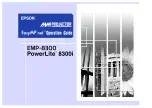
english
english
EN-42
EN-43
Operating the unit
Operating the unit
C
C
* It is sufficient for one of the values to be raised.
** millimetres of mercury
High pulse pressure
above 65 mmHg
Increased pulse pressure
55 to 65 mmHg
Normal pulse pressure
below 55 mmHg
Depending on age, weight and general health, the blood pressure values
can be different. Only a doctor can determine the right blood pressure
range for you and assess whether your blood pressure has reached a dan-
gerous level for you. Discuss your blood pressure values with your doctor.
Never change the dose of medicines prescribed by your doctor!
The categorisation according to WHO is stored with the readings and can
be called up again together with the readings from the memory.
The pulse pressure – not to be confused with the pulse beat – provides an
indication of the elasticity of the blood vessels. A stiff system of vessels
can have a negative effect on the cardiovascular system. Studies show
that the cardiovascular risk increases if the pulse pressure value is perma-
nently higher than 65 mmHg.
11. Pulse pressure
If your pulse pressure is permanently above 65 mmHg, consult your doctor.
The heart works in two phases, the contraction phase (systole) and the
relaxation phase (diastole). The pressure difference between systole and
diastole is called the pulse pressure or pulse amplitude. The higher the
pulse pressure, the harder the vessels.
If the device detects irregular pulses during the measurement, the sym-
bol is displayed once the measurement is complete. This can be set off
by an irregular heartbeat (arrhythmia), disturbances caused by movement,
talking or even breathing in deeply. The symbol is stored with the respec-
tive measurement.
If the symbol appears more frequently, this may be caused by an irregular
heartbeat and must be discussed with your doctor!
12. Irregular pulse waves and cardiac arrhythmia
Caution: Do not confuse the irregular pulse display with the flashing
pulse display that indicates the heart rate during every measurement
(see page 41).
Measurement results accompanied by irregular pulses should therefore be
viewed as critical and repeated under more favourable conditions.
WHO 2003
Systolic pressure
= Upper value
mmHg**
Diastolic pressure
= Lower value
mmHg**
Red
from 140*
from 90*
Yellow
120 to 139
80 to 89
Green
below 120
below 80
Measured results are automatically stored in the memory. The memory
can store up to 60 results and the average value.
When more than 60 measured values have been stored, the oldest value
(No. 60) is deleted to allow the latest value (No. 1) to be recorded.
13. Using the memory
Press the Memory button to call up data.
The average value of the stored results is
displayed with “A”, the values for systole, di-
astole and pulse and the pulse pressure (PP)
are shown alternately in the display (Figure
1, Figure 2).
Data retrieval
Figure 1
Figure 2
Содержание handy
Страница 28: ...english english EN 54 EN 55 ...








































